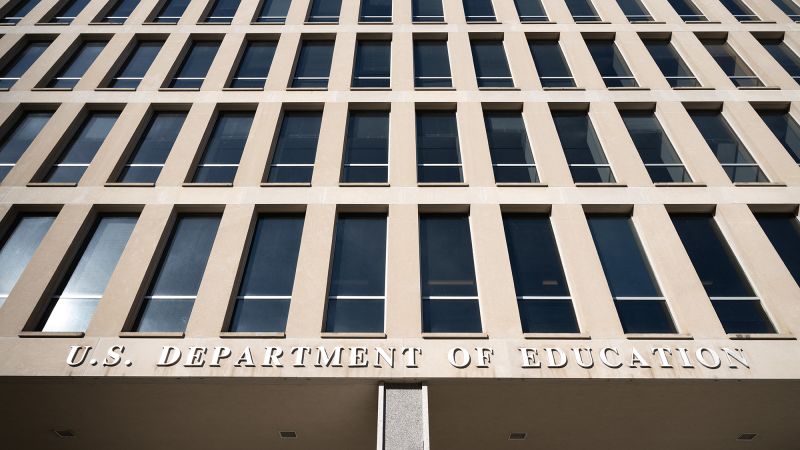The U.S. Department of Education is currently facing a considerable financial burden, with more than $7 million spent each month on salaries for employees who have been placed on leave. This situation stems from a series of layoffs connected to decisions made during the Trump administration, which reportedly aimed at reducing the size of the agency. The American Federation of Government Employees (AFGE) Local 252, representing the affected workers, highlighted that this exorbitant cost could persist for several years due to ongoing legal battles over the layoffs instituted by former President Trump’s administration.
In total, the Department of Education has disbursed over $21 million in payments to these employees in only three months following mass layoffs initiated in March. During this period, nearly 1,300 employees were terminated, while additional staff opted for voluntary buyouts. The mass layoffs were part of a broader governmental initiative under President Trump to streamline operations across various agencies, including the Education Department, which faced severe budget cuts.
The layoffs, which were announced as measures to enhance government efficiency, resulted in employees being promised salary payments until their formal termination date, June 9. However, a decision by a federal court in May halted attempts by the White House to close the agency, thereby resulting in the affected employees being reinstated, albeit placed on “administrative leave.” This status means that while they remain on payroll, they are barred from performing any work duties.
Due to these developments, the ongoing compensation for these workers extends beyond the original termination date, leading many to describe their predicament as “administrative purgatory.” In this state, the Department incurs further costs, prompting discussions regarding the viability of such financial expenditures. AFGE Local 252 noted that the actual monthly expenses could well be even higher than $7 million when factoring in additional benefits and salaries for managerial staff beyond the employees on leave.
Linda McMahon, then Education Secretary, portrayed the layoffs as an integral part of a commitment to proper allocation of resources aimed at enhancing the educational outcomes for students, teachers, and parents. However, critics have pointed out that these actions have resulted in significant waste, as ex-employees continue to receive paychecks without fulfilling any work obligations. Nevertheless, several affected employees have voiced their frustrations and feelings of shame regarding their situation, likening their payout to receiving welfare or being leeches on the system, despite their deep desire to serve educational missions.
One such employee, Ariel Shepetovskiy, a former Department of Education lawyer, expressed her discomfort with being paid for not actively working, admitting feelings of guilt as though she were a parasite on the taxpayer. Despite her frustrations, Shepetovskiy, along with others, opted to remain hopeful that they would eventually be reinstated to their roles.
The misclassification of employees, combined with ongoing lawsuits, has prompted the Department of Education, as communicated through emails, to assure those on administrative leave that it is evaluating the necessary steps to reintegrate them back into their positions effectively. This includes assessing technology updates and workspaces required for their full operational capacity.
Simultaneously, various government agencies have faced similar challenges, leading to many employees being placed on administrative leave as a result of ongoing lawsuits. Moreover, in an attempt to manage the workforce, offers for buyouts and settlements have been extended to numerous employees, encouraging them to resign, albeit at the risk of foregoing their chances for reemployment.
The offers, presented to some as enticing but others as intimidating, have led to mixed reactions. Employee representatives, such as Sheria Smith from AFGE Local 252, have argued these settlement offers are disingenuous and serve as tactics to pressure dedicated public servants into leaving their posts. Those contemplating the offers, like Victoria DeLano, emphasize the importance of retaining their positions, expressing that many are unwilling to abandon their roles for the sake of a temporary financial payout when the larger mission of educational service remains paramount.
In conclusion, the situation within the U.S. Department of Education is marked by ongoing financial strain due to bureaucratic restructuring, with significant implications for both the employees involved and the effective functioning of the government structure as a whole. The evolving saga raises questions about the balancing act of fiscal responsibility, employee rights, and the overall mission of the agency to serve the educational needs of a nation.



